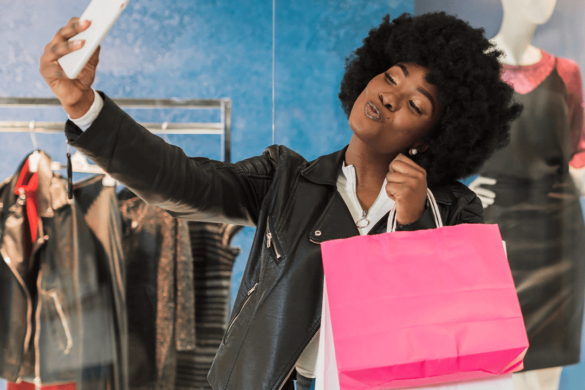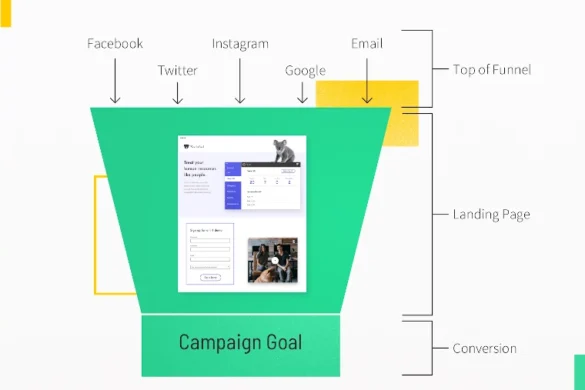Table of Contents
Artificial intelligence (AI) detection is the process of using AI algorithms to analyze media files, such as text, images, and videos, in order to identify whether the creator is an AI program or a human.
Without a doubt, technology has drastically changed the way we work, improving convenience and output. By producing a variety of writing tools and software to help with editing, proofreading, and content creation, developers have had a huge global impact on the content creation process. But have we come to a point where having so many tools is becoming too much?
Google seems to agree with this position; a few months ago, search advocate John Mueller underlined that websites that use AI-generated content risk fines for violating Google’s webmaster guidelines. This emphasizes how important the problem is for people who depend on search engines to get information, promotional materials, and advertorial content in front of their target markets.
How then can you avoid these penalties by identifying AI content? We’ll walk you through the process of identifying AI-generated content using a variety of methods, including closely examining language usage, spotting patterns in the content, and using specialized software designed to identify text generated by artificial intelligence.
Here’s a quick rundown of the topics we’ll cover:
What is AI detection?
AI detection involves reviewing digital content to spot possible replication or plagiarism and to differentiate content produced by AI software from that produced by humans. In order to identify patterns or irregularities indications of artificial intelligence (AI)-generated content, this process makes use of machine learning algorithms to evaluate various content aspects, including sentence structure, vocabulary, and writing style.
AI versus human capabilities
When comparing content created by AI with content created by humans, the main difference is where inspiration comes from. Written content reflects the uniqueness of the author by referencing their experiences, feelings, and worldview. On the other hand, AI-generated content is created by computers that use pre-existing datasets and algorithms to produce text that looks like it was written by a human.
For example, even though an AI-generated news article might contain accurate information, it can’t convey the feelings and viewpoints of the people involved in the story the same way a human journalist can. In the same way, while an AI-generated painting may be aesthetically pleasing, it will never be able to express the richness of meaning and symbolism that a painting created by a human artist can.
In the end, while AI-generated content fulfills a purpose, it is eventually inferior to human creativity, imagination, and ingenuity. This is due to AI’s current lack of life experience and empathy, two qualities necessary for creative expression. The data that developers have used to train AI-generated content limits its creativity.
How to detect AI content
Here are five simple ways to spot content created by artificial intelligence:
1. Check to see if the tone and language seem robotic
As was previously mentioned, AI-generated content usually lacks the originality, nuance, and creativity of human-authored works. Thus, the first clue that the content is not human should be provided if its language and tone seem artificial or robotic.
What precisely is meant by “robotic” or “unnatural”? It could involve writing that sounds too formal or technical, too emotionless or impersonal, too perfect and too polished, or it could contain content that doesn’t have the natural flow and cadence of spoken language. Human language is flawed by nature; it has slang, colloquialisms, and regional quirks that add to its attraction and genuineness.
AI-generated content, on the other hand, frequently comes across as clinical and generic and lacks the small details and irregularities that enhance human communication. It’s important to consider both the present limitations of AI technology and the language and tone of the text in order to identify these variations.
2. Examine the text carefully for any repetitions of words or cliches
AI technology has come a long way recently, but it still has limitations and can’t fully replace the creativity and complexity of human thought and expression. Repetitive words or cliches are frequently signs of AI-generated content because AI algorithms rely on pre-existing data to create content.
Because AI technology relies on pre-programmed templates and formulas, it often generates content using language that is familiar and predictable. As a result, it frequently uses the same words, phrases, and cliches because that is the extent of its programmed capabilities.
An AI-generated news article, for example, might frequently use phrases like “As per reports” or “In an official statement,” giving it a uniform tone that lacks of the uniqueness of human composition. Similar to this, a product description produced by AI may use platitudes like “groundbreaking innovation” or “state-of-the-art technology” without clearly conveying the unique qualities of the product.
To summarize, the constraints of AI technology may restrict creativity and limit its use, especially in industries that value uniqueness and creativity like advertising, literature, and the arts.
3. Look for patterns in the writing style or word choice
As we’ve already established, content generated by AI often comes across as robotic or generic, with a lot of repetition and excessive use of clichés. But let’s go a little further and look more closely at this. Let’s talk about how spotting trends in a writer’s style or word choice can help determine whether or not the content was produced by artificial intelligence.
The use of industry-specific terminology or technical jargon is one common pattern that indicates the content was generated by an algorithm designed to include such terms. When looking at the writing style and word choice of AI-generated content, you’ll frequently notice an excessive dependence on “buzzwords” that are frequently used in the sector.
Content that seems to have been created using a template or that adheres to a rigid structure is another clue. This is due to the fact that content produced by AI frequently follows predetermined formats, like news articles or product descriptions.
AI algorithms are more likely to produce content with either overly simplistic or overly complex language because it is difficult for them to accurately determine the appropriate language complexity for the intended audience. The process of telling computer-generated text from human-written text becomes easier to handle as one becomes skilled at spotting these patterns.
4. Consider the context of the content presentation
When we talk about text context, we’re talking about the audience, purpose, and cultural background of the content, among other contextual elements that may have an effect on how it is interpreted. Our understanding of the text’s intended meaning can be improved by considering these contextual factors.
These contextual elements might not always be taken into account by AI-generated content, which could lead to misinterpretations or inaccurate information in the message. Take, for example, reading a news article produced by artificial intelligence. You may have noticed that the author neglected to take the audience’s cultural background into account, which resulted in unintentional biases or the use of offensive language—both of which raise ethical questions about AI.
When identifying content produced by artificial intelligence, it’s also important to look for definitions that don’t make sense in the text. As an example, let’s say that although an article explains the benefits of renewable energy sources, the definition of “solar power” given in the text is more appropriate for “wind energy.” This disparity could imply that AI technology was used to create the content.
How to detect AI-generated images
How many times have you seen an image online and questioned its authenticity? A photograph that seems perfect is probably not real. Here are four ways to tell if an image was created using AI:
1. Review the image metadata
Metadata analysis is one method for identifying AI-generated images since it provides information about the camera, software, and settings that were used to take the picture. It might also reveal the location and time the picture was taken, which would help with its authenticity. Moreover, metadata analysis can reveal any image manipulation or alterations.
By revealing important details, metadata analysis is unquestionably invaluable for determining a photograph’s authenticity. But it’s important to remember that metadata can be altered or removed from an image, so extra precautions are needed to make sure it’s authentic.
2. Studying visual patterns
An additional approach involves finding obvious visual irregularities, like constant contour or texture patterns, which are common machine learning methodologies. This means carefully examining every pixel of the image to identify irregularities that are impossible for a human to catch on camera.
Images produced by AI may have perfect textures or patterns that look incredibly realistic. Sometimes it’s easy to tell whether an image was created by AI because machine learning algorithms have trouble with certain aspects of images, such as shadows and reflections.
3. Using image-reverse searches
Reverse-image search engines provide a way to identify AI-generated images, such as those created by Bing Image Creator, since they might not have exact matches online. One can determine whether a picture is original or has been used before by performing a reverse-image search.
By looking for the image’s original form, this technique helps identify instances where the image has undergone modifications. You can upload a photo or enter its URL into a search engine to perform a reverse image search. Although not perfect, this technique is likely to be a useful tool for detecting images that have been manipulated.
Although these methods can be helpful, it’s best not to rely on them exclusively for image verification. It’s also important to use additional strategies, like consulting with experts and cross-referencing data from different sources.
AI detection tools’ top picks
Here are the three most popular AI detection tools to try out:
1. Content at Scale
Our top pick is Content at Scale, an effective artificial intelligence (AI) tool that uses machine learning algorithms to find instances of plagiarism, duplication, and artificial intelligence (AI)-generated content. By using advanced text analysis tools, Content at Scale effectively and reliably identifies similarities between different content pieces, guaranteeing the authenticity and integrity of your work.
You can save time and effort by using Content at Scale’s effective content detection process, freeing you up to focus more on creating original and worthwhile content for your audience.
2. ZeroGPT
Instead of relying on machine learning techniques, ZeroGPT generates new, human-like text by comparing it with the content under examination using a language model known as GPT-2. With this method, ZeroGPT can identify material produced by a greater variety of AI systems and even identify content that has undergone significant human editing to improve its naturalness.
Additionally, ZeroGPT has a simple user interface that makes content uploading and analysis simple. It is a great choice in situations where quick and reliable assessment of published content on the internet is required.
3. Writer AI
Writer AI is another interesting AI content detection tool. It makes use of machine learning techniques to examine writing styles and detect content that might have been produced by an AI program. This tool is especially helpful for locating content created by language models such as GPT-3, which has become increasingly popular recently.
Its complex algorithms can identify patterns in the text’s syntax and vocabulary, allowing it to differentiate between writing produced by AI and writing authored by humans.
Improve your rankings with human-created content
Our team of skilled content writers at SteveAyo is committed to producing excellent, human-authored content that will raise your company’s search engine rankings and protect it from the dangers of writing produced by artificial intelligence.
Why then hesitate?
To learn more about how our content marketing services can take your website to new heights, contact us online or at (+255) 783-957-836.







Add your first comment to this post